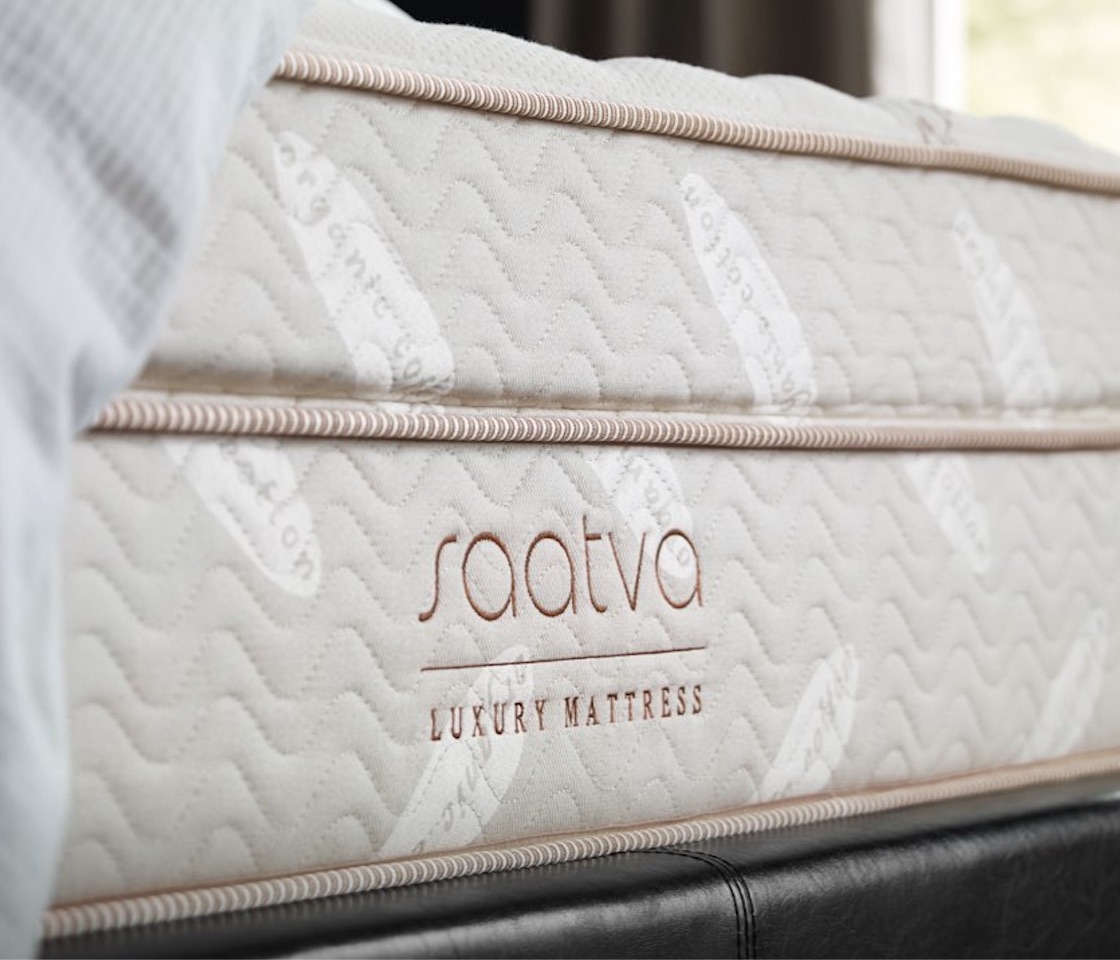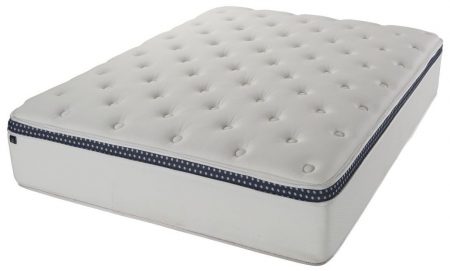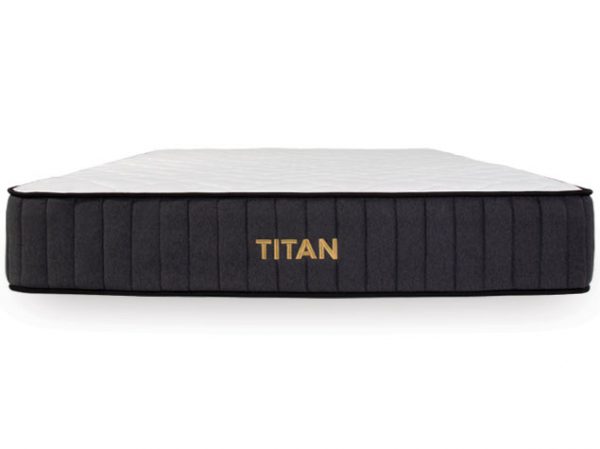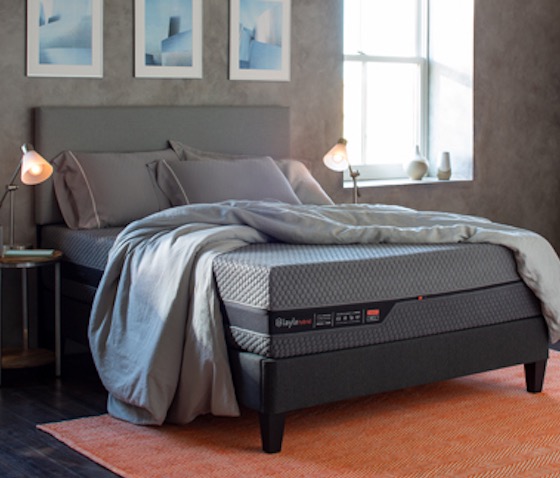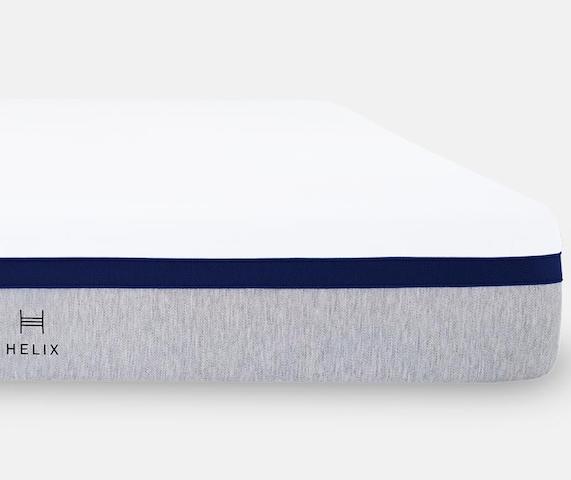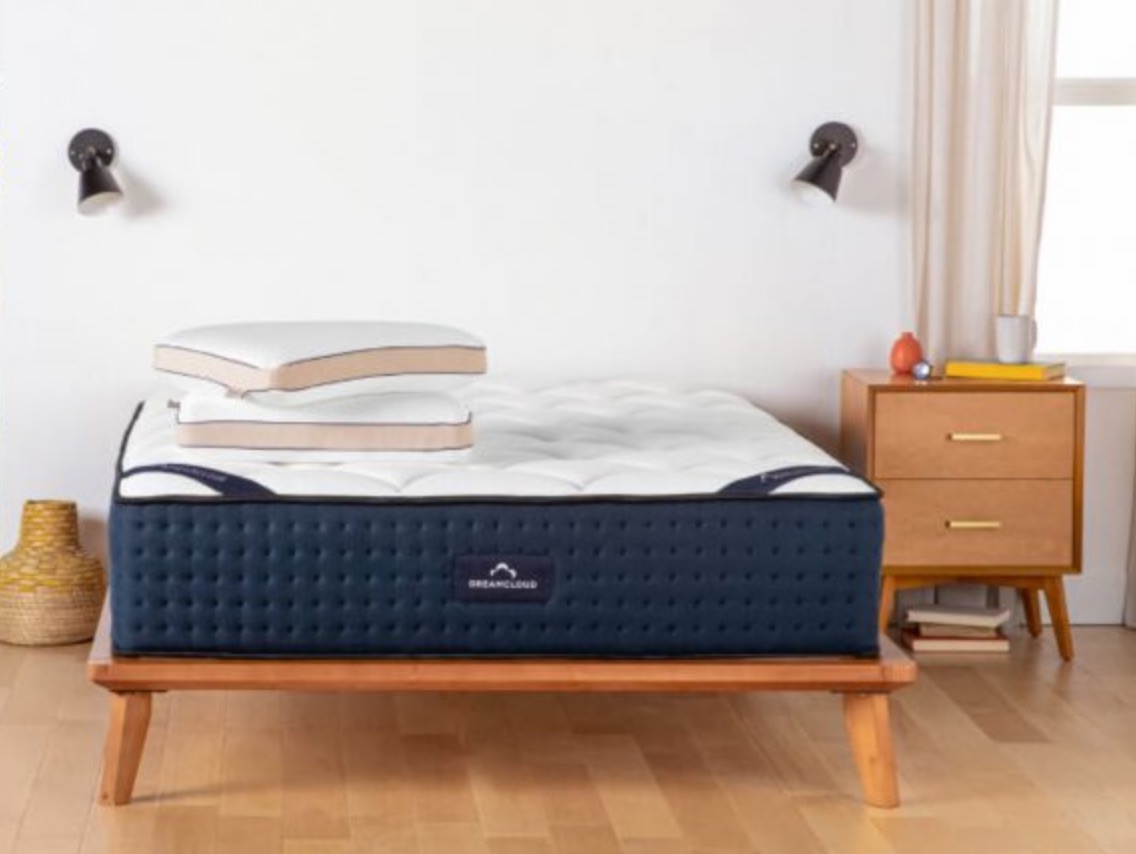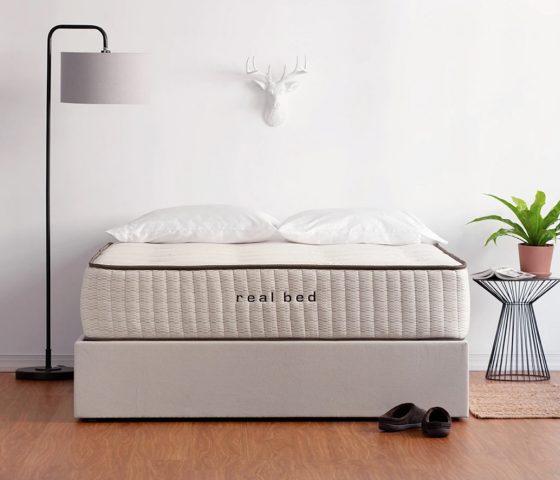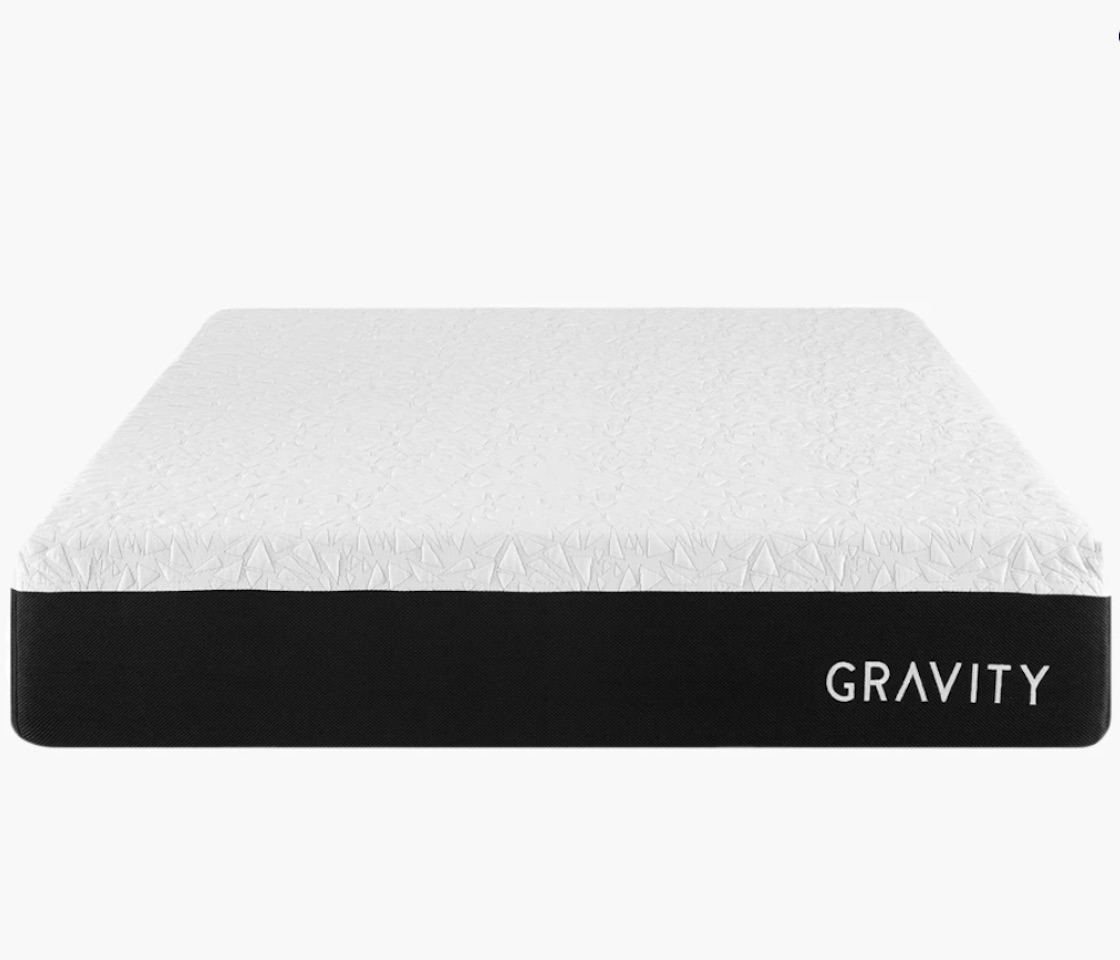The Construction of a Hybrid Mattress
Hybrid mattresses combine a coil support core with a comfort layer made of latex or memory foam. The support core of a hybrid mattress is always outfitted with pocketed coils, which are encased in fabric or cloth for more support and less motion transfer. A layer of base foam is usually located beneath the support core for extra padding and stability. This base material is almost always made of polyurethane foam, or polyfoam.
The comfort layer must feature at least two inches of memory foam and/or latex for the mattress to be considered a true hybrid; the specific ratio will vary by the manufacturer. In some cases the comfort layer is reinforced with gel to lower heat retention, allowing you to sleep cooler than you would on a traditional foam or latex mattress. The Brooklyn Bedding Bowery Hybrid, WinkBed, and Titan mattresses all feature gel-infused memory foam.
Other models feature copper components in the comfort layer to help improve circulation and alleviate joint pain in sleepers.
Many hybrids sold today feature a third layer known as a pillow-top or Euro-top, which is sewn to the top of the comfort layer. A pillow-top layer is sewn with a gap between the comfort layer, giving it a pillow-like appearance; euro-tops, on the other hand, are sewn flush with the comfort layer for a more uniform look. Pillow-tops and euro-tops can be constructed from a wide range of materials, such as cotton, wool, fiberfill or, in some cases, more latex or memory foam. Polyfoam may also be used.
The dimensions of a hybrid mattress will vary by manufacturer, but here’s a general rule-of-thumb for sizing the bed:
- The pillow-top of Euro-top (if present) will measure one to two inches (1-2″)
- The comfort layer will measure three to four inches (3-4″)
- The pocketed coil support core will measure seven to eight inches (7-8″)
Due to their thicker comfort layers and sizable support core, hybrid mattresses tend to have a taller profile than the average mattress. This thicker construction also accounts for their heavier weight.
It’s important to note that the term ‘hybrid’ is frequently misused. For example, ‘springless hybrid’ mattresses feature a comfort layer and support core constructed entirely from latex and foam. These models are not true hybrid mattresses because they do not include a pocketed coil support core. Same goes for ‘hybrid’ mattresses that feature less than two inches of memory foam and/or latex in the comfort layer.
There is still plenty of confusion about the correct and incorrect definitions of a ‘hybrid mattress’. As you’re visiting brick-and-mortar stores or navigating the web, be wary of ‘hybrid’ mattress labels — as well as customer reviews about these models.
The Feel of a Hybrid Mattress
As the name implies, hybrid mattresses essentially bridge the gap between the way other mattress types feel. Let’s look at some key characteristics:
- Responsive yet conforming: Hybrid mattresses are responsive and bouncy like innersprings, which many couples say makes them good for sex. However, the comfort layer also offers closer-than-average conforming and good pain and pressure relief.
- Motion isolation: Unlike innersprings, hybrids can absorb and minimize a significant amount of motion transfer. This can help cut down on nighttime disruptions for couples.
- Sleeping fairly cool: Hybrids have good air circulation in the support core, which allows them to sleep cooler than most all-foam or all-latex beds. However, the thick comfort layers may cause them to retain more heat than a standard innerspring.
- Minimal noise: Pocketed coils are quieter than other mattress springs, but hybrid owners may notice squeaks and creaks from time to time.
As with other mattresses, testing out hybrids in-person at a brick-and-mortar store is useful for finding the one that best fits your needs and preferences. Be sure to compare the feel of different hybrids, and also look at models with different components and composition ratios. If buying your mattress online, opt for one with a lengthy sleep trial. Most online mattress retailers offer significantly longer sleep trials than the ones you’ll find in-store (e.g. 100 nights vs. only 30 nights).
Choosing the Best Hybrid Mattress
In large part, the quality of a hybrid mattress depends on its individual components. Due to their complex construction, the latex, foam and coils used in the mattress should all be taken into consideration.
Different measurements are used to evaluate each of these components. This chart provides an overview; we go into more detail below.
Density
Density is used to measure the supportiveness of memory foam and base foam in hybrid mattresses. Density refers to how much compression a mattress can withstand while still providing adequate support for sleepers. Density is expressed in pounds per cubic foot, and is used to categorize foams into three grades: low (conventional), medium (HD) and high (HR).
Low-grade memory foam offers decent motion isolation and contouring, and will retain its shape very quickly. High-grade memory foam, on the other hand, provides excellent motion isolation and contouring — but shape recovery will take much longer. Medium-grade memory foam offers a good compromise between the two.
Hybrid mattresses will commonly use more than one grade of memory foam in the comfort layer. For example, a hybrid comfort layer might feature one to two inches of low-density memory foam and another one to two inches of medium- or high-grade foam for extra support.
As for their support layers, hybrid mattresses (along with other foam-based mattresses) will use higher-density polyfoam, which is also measured using density. This allows the mattress to provide reliable, long-term support without sagging under the sleeper’s body weight.
Memory foam is much denser than polyfoam, so the scale is slightly different. The table below features a more detailed breakdown.
Indentation Load Deflection (ILD)
While density can be used to evaluate supportiveness, indentation load deflection (ILD) is used to gauge the firmness of a mattress. ILD refers to the amount of compression needed to make a four-inch indentation on the top surface of a mattress. The higher the ILD number, the firmer the mattress — although mattresses may carry an ILD range (rather than a single rating) if the firmness is affected by factors like room temperature.
Latex and memory foam adhere to different ILD scales. Most memory foam comfort layers have an ILD number that falls between 8 and 20; the ILD of latex, on the other hand, can range from 15-16 to 40 or higher. Low ILD memory foam and latex will conform very closely to your figure, but the material may also cause a ‘sinking’ feeling that might be uncomfortable. Alternatively, a higher ILD means an ultra-firm sleep surface that does not contour as closely (if at all); this can be problematic for people with chronic back or shoulder pain.
The table below features a breakdown of ILD ratings for memory foam and latex.
One thing to note: ILD scales often omit certain numbers because these are seen as ‘middle-ground’ choices between the two adjacent categories. For example, an ILD of 28 should be considered a compromise between ‘medium’ and ‘medium-firm’.
The bottom line on density and ILD: Ultimately, you will be the best judge of the best density and ILD measurements in a hybrid mattress. Generally speaking, sleepers tend to prefer hybrid mattresses with a comfort layer density of at least 2.2 pounds per cubic inch, whether the layer is made of memory foam or polyfoam. The most popular memory foam layers have an ILD of 10 to 20, while the most popular latex layers range between 20 and 32 on the ILD scale.
You can use density and ILD to evaluate the feel and supportiveness of the foams used in the comfort layers of a hybrid mattress. To evaluate the quality of the support core, you’ll want to look at two measurements: gauge and coil count.
Gauge
Gauge refers to the thickness of the pocketed coils, and is expressed in numerals that represent different widths. The higher the gauge number, the thinner the measurement; most mattresses sold today range in gauge from 12 (thickest) to 18 (thinnest).
Hybrids utilize pocketed coils, which are typically the highest-gauge (or thinnest) coils used in innerspring support cores. The gauge of pocketed coils typically falls between 14 and 18. Support cores with lower-gauge pocketed coils tend to have a longer lifespan and provide more stability.
Some hybrid mattresses, like our Luxury Pick, the WinkBed, have a zoned support system. These leverage lower-gauge coils in areas of the mattress that support heavier parts of the sleeper’s body, such as beneath the hips or shoulders. Thinner, higher-gauge coils are used elsewhere to support lighter parts of the body, such as the head and legs. The result is a marked improvement in supportiveness and pressure relief, particularly for sleepers with chronic pain.
Coil Count
In addition to the gauge, coil count may affect how a mattress feels and how long it lasts — but not necessarily. The coil count of most pocketed coil support cores ranges from 800 to 1,200. Coil count may be used to evaluate the contouring abilities and projected lifespan of a mattress to a point, but the differences are negligible in mattresses with coil counts that exceed 1,000.
‘Coil count’ — like ‘hybrid — is a marketing term manufacturers use to sell mattresses. The biggest effect coil count will have on a mattress is found on the price-tag, since high coil counts are usually linked to higher costs.
